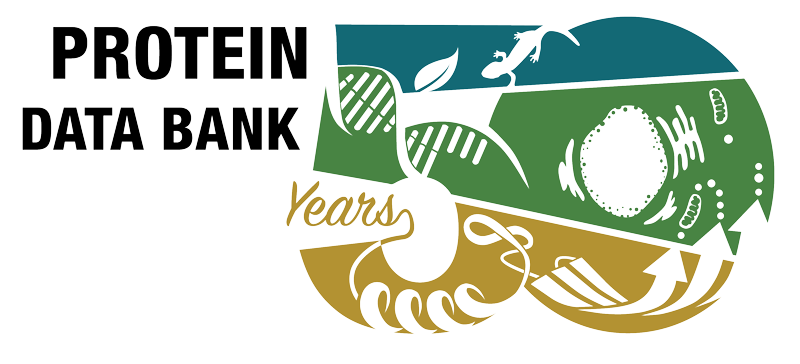Reviews - 1pes mentioned but not cited (3)
- Classification of intrinsically disordered regions and proteins. van der Lee R, Buljan M, Lang B, Weatheritt RJ, Daughdrill GW, Dunker AK, Fuxreiter M, Gough J, Gsponer J, Jones DT, Kim PM, Kriwacki RW, Oldfield CJ, Pappu RV, Tompa P, Uversky VN, Wright PE, Babu MM. Chem Rev 114 6589-6631 (2014)
- The Tail That Wags the Dog: How the Disordered C-Terminal Domain Controls the Transcriptional Activities of the p53 Tumor-Suppressor Protein. Laptenko O, Tong DR, Manfredi J, Prives C. Trends Biochem Sci 41 1022-1034 (2016)
- Molecular dynamic simulation insights into the normal state and restoration of p53 function. Fu T, Min H, Xu Y, Chen J, Li G. Int J Mol Sci 13 9709-9740 (2012)
Articles - 1pes mentioned but not cited (5)
Reviews citing this publication (33)
- Structural biology of the tumor suppressor p53. Joerger AC, Fersht AR. Annu Rev Biochem 77 557-582 (2008)
- Rescuing the function of mutant p53. Bullock AN, Fersht AR. Nat Rev Cancer 1 68-76 (2001)
- p53 in growth control and neoplasia. Gottlieb TM, Oren M. Biochim Biophys Acta 1287 77-102 (1996)
- The tumor suppressor p53: from structures to drug discovery. Joerger AC, Fersht AR. Cold Spring Harb Perspect Biol 2 a000919 (2010)
- De novo design of helical bundles as models for understanding protein folding and function. Hill RB, Raleigh DP, Lombardi A, DeGrado WF. Acc Chem Res 33 745-754 (2000)
- The role of tetramerization in p53 function. Chène P. Oncogene 20 2611-2617 (2001)
- Pathological unfoldomics of uncontrolled chaos: intrinsically disordered proteins and human diseases. Uversky VN, Davé V, Iakoucheva LM, Malaney P, Metallo SJ, Pathak RR, Joerger AC. Chem Rev 114 6844-6879 (2014)
- p53 regulation by post-translational modification and nuclear retention in response to diverse stresses. Jimenez GS, Khan SH, Stommel JM, Wahl GM. Oncogene 18 7656-7665 (1999)
- p53 mutation spectrum and load: the generation of hypotheses linking the exposure of endogenous or exogenous carcinogens to human cancer. Hussain SP, Harris CC. Mutat Res 428 23-32 (1999)
- The role of calcium-binding proteins in the control of transcription: structure to function. Ikura M, Osawa M, Ames JB. Bioessays 24 625-636 (2002)
- Fine-tuning multiprotein complexes using small molecules. Thompson AD, Dugan A, Gestwicki JE, Mapp AK. ACS Chem Biol 7 1311-1320 (2012)
- P53 and IGFBP-3: apoptosis and cancer protection. Grimberg A. Mol Genet Metab 70 85-98 (2000)
- The 1995 Walter Hubert Lecture--molecular epidemiology of human cancer: insights from the mutational analysis of the p53 tumour-suppressor gene. Harris CC. Br J Cancer 73 261-269 (1996)
- Tetramer formation of tumor suppressor protein p53: Structure, function, and applications. Kamada R, Toguchi Y, Nomura T, Imagawa T, Sakaguchi K. Biopolymers 106 598-612 (2016)
- Targeting p53 pathways: mechanisms, structures, and advances in therapy. Wang H, Guo M, Wei H, Chen Y. Signal Transduct Target Ther 8 92 (2023)
- p53--a natural cancer killer: structural insights and therapeutic concepts. Römer L, Klein C, Dehner A, Kessler H, Buchner J. Angew Chem Int Ed Engl 45 6440-6460 (2006)
- p53 tetramerization: at the center of the dominant-negative effect of mutant p53. Gencel-Augusto J, Lozano G. Genes Dev 34 1128-1146 (2020)
- Diffusion NMR spectroscopy: folding and aggregation of domains in p53. Dehner A, Kessler H. Chembiochem 6 1550-1565 (2005)
- Ambiguous distance data in the calculation of NMR structures. Nilges M. Fold Des 2 S53-7 (1997)
- Mechanisms of environmental chemicals that enable the cancer hallmark of evasion of growth suppression. Nahta R, Al-Mulla F, Al-Temaimi R, Amedei A, Andrade-Vieira R, Bay SN, Brown DG, Calaf GM, Castellino RC, Cohen-Solal KA, Colacci A, Cruickshanks N, Dent P, Di Fiore R, Forte S, Goldberg GS, Hamid RA, Krishnan H, Laird DW, Lasfar A, Marignani PA, Memeo L, Mondello C, Naus CC, Ponce-Cusi R, Raju J, Roy D, Roy R, Ryan EP, Salem HK, Scovassi AI, Singh N, Vaccari M, Vento R, Vondráček J, Wade M, Woodrick J, Bisson WH. Carcinogenesis 36 Suppl 1 S2-18 (2015)
- Allosteric modulation of protein oligomerization: an emerging approach to drug design. Gabizon R, Friedler A. Front Chem 2 9 (2014)
- Modulation of Disordered Proteins with a Focus on Neurodegenerative Diseases and Other Pathologies. Martinelli AHS, Lopes FC, John EBO, Carlini CR, Ligabue-Braun R. Int J Mol Sci 20 E1322 (2019)
- The role of p53 in human cancer. Malkin D. J Neurooncol 51 231-243 (2001)
- DNA Damaged Induced Cell Death in Oocytes. Gebel J, Tuppi M, Sänger N, Schumacher B, Dötsch V. Molecules 25 E5714 (2020)
- Structural diversity of p63 and p73 isoforms. Osterburg C, Dötsch V. Cell Death Differ 29 921-937 (2022)
- Control mechanisms in germ cells mediated by p53 family proteins. Gebel J, Tuppi M, Krauskopf K, Coutandin D, Pitzius S, Kehrloesser S, Osterburg C, Dötsch V. J Cell Sci jcs.204859 (2017)
- Protein complexes studied by NMR spectroscopy. Wand AJ, Englander SW. Curr Opin Biotechnol 7 403-408 (1996)
- Pathways of apoptosis and the modulation of cell death in cancer. Fisher DE. Hematol Oncol Clin North Am 15 931-56, ix (2001)
- Lac repressor at last. Sauer RT. Structure 4 219-222 (1996)
- Tissue specificity and spatio-temporal dynamics of the p53 transcriptional program. Pant V, Sun C, Lozano G. Cell Death Differ 30 897-905 (2023)
- Big versus small: The impact of aggregate size in disease. Hnath B, Chen J, Reynolds J, Choi E, Wang J, Zhang D, Sha CM, Dokholyan NV. Protein Sci 32 e4686 (2023)
- Utilizing NMR to study the structure of growth-inhibitory proteins. Marassi F. Methods Mol Biol 223 3-15 (2003)
- Computational Methods to Predict Intrinsically Disordered Regions and Functional Regions in Them. Anbo H, Ota M, Fukuchi S. Methods Mol Biol 2627 231-245 (2023)



 PMID:
PMID: 